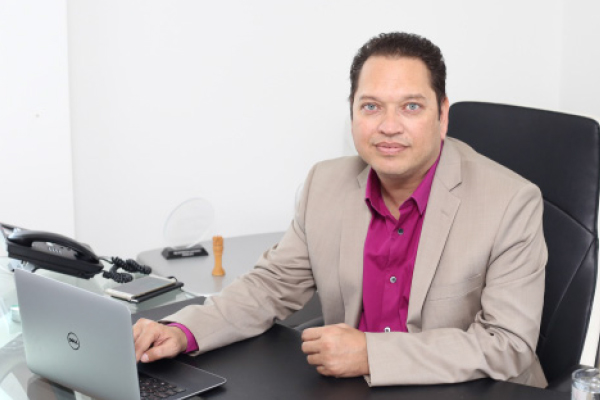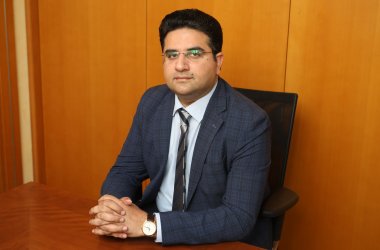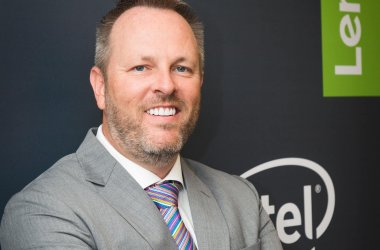Jagat Shah, Chairman and CEO, Mitsumi Distribution, outlines the challenges of operating in Africa and explains the key strategies to the company’s success.
The African continent poses an ocean of prospects for channel players looking to build business primarily in the ICT sector. While other parts of the Middle East region have experienced a sluggish growth, the African economies are expected to continue to expand at a moderately rapid pace. As per a recent report by Africa Economic Outlook, the regional GDP growth is projected to be 4.5 percent over the last year and five percent in 2016 after subdued expansion in 2013 (3.5 percent) and 2014 (3.9 percent).
The challenge for most established players is being able to sustain the profitability of the business especially during dire market circumstances. Mitsumi Distribution ventured into the continent two decades ago and continues to see it as a land of opportunities.
“We see a strong potential for growth in the African market. We have grown at the same pace each year, which is around 20 to 30 percent. Having operated in the market for 20 years, we stand at an advantage in terms of expertise and experience in the region,” says Jagat Shah, Chairman and CEO, Mitsumi Distribution.
Within the continent, the East African region is witnessing a tremendous growth, largely because it enjoys a more stable political system. Moreover, it has speeded its regional integration and has seen considerable progress in institutional reforms according to reports. Also, the region has been popular for major investments in terms of both national and regional infrastructure.
According to Shah, there are also several government initiatives enabling the growth in the region.
“Government initiatives in East Africa are fueling the development further,” he says, “We have seen the commercial sector expanding rapidly. The entire economy is experiencing a growth of around five to six percent annually. In the coming two to three years, we expect the region to advance tremendously.”
Recognising the massive potential that exists in the region, many vendors too are keen on optimising the prospects. The distributor boasts large vendors such as Samsung, Dell, HP, Toshiba and Lenovo to name a few in its portfolio. With the focus mainly on the volume and mobility business, Mitsumi Distribution also has a small percentage of business coming in from its value arm.
Shah adds, “If you look at the IT sector, the commercial space is growing strongly, the consumer space is now being taken over by mobile and telecom. Smartphone penetration in Africa is growing at an accelerated pace. And we see that to continue for a long time to come. Thanks to increasing number of infrastructure projects, our value business is also growing. The market is very far off from being saturated.”
The distributor’s business focus for 2016 is to sustain its growth. However, considering the volatility of the market, this is not an easy task to accomplish.
“As markets across the globe are seeing a downturn, we are facing challenges from people plunking goods from different parts to our region. We are trying to safeguard that and grow in the business we have been successful today. Continued growth is the main potential we are aiming for.”
Although the distributor is not looking to expand into new territories as the market conditions are still unclear at the moment, it is working towards garnering a larger market share within the countries it has a presence in.
Shah says, “As Middle East markets are experiencing a slowdown, it also had a grave impact in our part of the region. This is mainly because of the proximity of Middle East and Africa regions.”
The biggest challenge for the African-based distributor is the issue of grey products coming into the region from the Middle East.
“It is a challenge because Middle East being a bigger market, has always enjoyed a professional rate compared to Africa. And when the grey products come in, it really disturbs the channel. That is the biggest problem we face as a distributor. Other challenges include currency fluctuations and shrinking budgets from governments.”
But the CEO is positive that the landscape will alter for the better and believes vendors are doing their best to control the issue of grey goods.
“Recently, we are seeing some landscape realigning and there is more positivity in the business as well. Most of the distributors’ and channel stocks are now getting absolute and vendor pushing has slightly reduced. Since the pressures have lowered, the excessive inventory, which everyone was holding has also decreased.
“As of last month, we have noticed the demand has slightly started to pick up. In fact, so much clean-up has happened in the past year that we now have many genuine players in the market who refrain from rotating products for the sake of it. We are seeing some positivity definitely.”
In most first world countries, it is the vendors’ responsibilities to undertake the business development, marketing and demand generation activities. However in Africa, traditionally, these tasks lie with the distributor.
“This way the pressure and responsibilities are much more on African distributors, this is another challenge,” he says. “But that being said, today the structures are changing gradually. Now the distributor has a chance to focus on his core business of distribution, logistics and finance. More distributors are now demanding the vendors take up business development and marketing activities.”
Other critical problems in Africa include credit rules and logistics, which is a deterring factor for new entrants. This is where the distributor’s strengths come to play. With 20 years of market knowledge and business know-how, Mitsumi becomes the preferred choice for vendors and partners alike.
“The experience and expertise of the market that we bring in cannot be matched by any of our competitors,” he adds.
He believes the company’s success has a lot to do with its business model.
“One of the reasons we are stable and are able to grow despite challenging market circumstances is thanks to our business model. We have always been a micro distribution company and have never relied on any sub-distribution model. We have in-country stocking and manpower in all the countries we are present in, which helps us to cater to the market more effectively. This has enabled us to have better margins when compared to other distributors. Moreover, we understand consumer demands and credit systems in the market. ”
The distributor’s focus in the Middle East has solely been in the UAE for now and it is looking to strengthen that through acquisitions in the future.
“Right now, the Middle East market is challenging but going forward as inventory levels are reducing, I am seeing some positivity. We are waiting for the market to stabilise before we look into strengthening our presence.”
In terms of technologies, Shah says anything to do with mobility and e-commerce have the highest demand in the African market.
“It is worth looking into these two aspects. Because of the vast landscape, it is impossible to cover all areas. Therefore online is a preferred option. The African market sees more transactions through mobile payments rather than credit cards. In fact, the mobile payment gateway began from Kenya with M-Pesa, a pioneer of mobile payments globally. The world is accepting this very fast and we see technologies emerging very strongly.”
Keeping this in mind, Shah urges partners to transform with the times.
“Traditional distribution and retail selling model will eventually be ineffectual. Partners need to work on adding more value to the system and focusing on online opportunities. Transformation is key for success.”
Over this year, we will see the distributor adding more vendors to its portfolio and continue looking at maintaining its growth of 20 to 30 percent year-on-year.
“We don’t plan to expand in terms of verticals but hope to increase our market share in the areas where we are present,” he adds.






